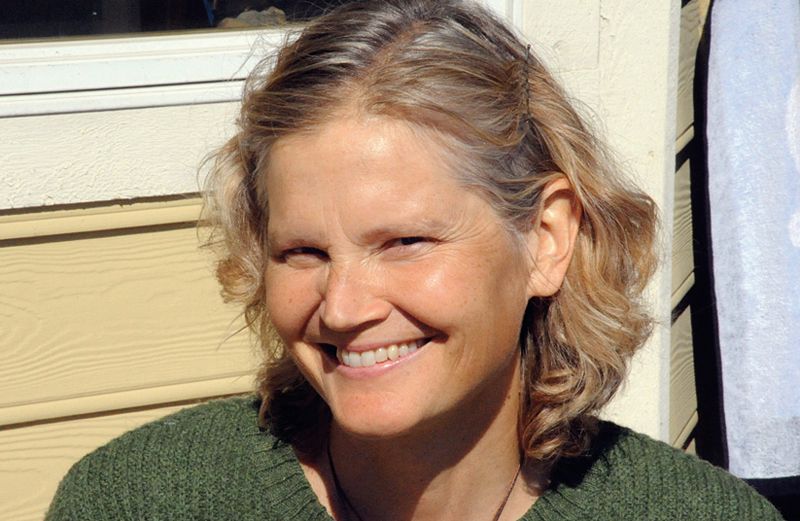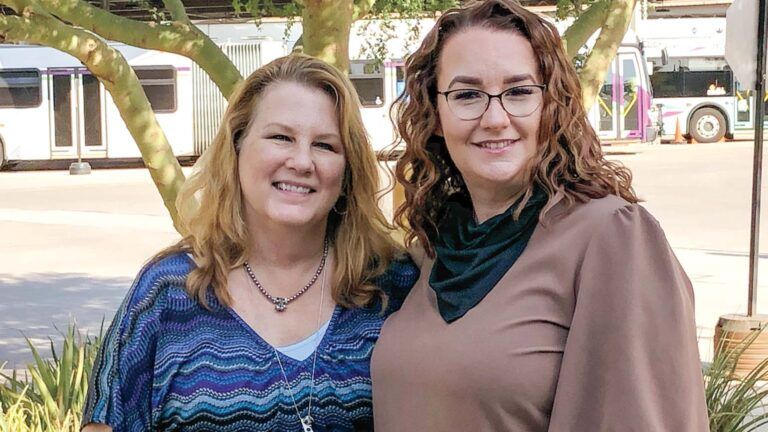Killer whales are Eva Saulitis’s life’s work. Her passion. She has studied them from the moment she first glimpsed one cutting through the waters of Alaska’s Prince William Sound almost three decades ago.
For most of those years she’s tracked a pod of orcas, survivors of the Exxon Valdez oil spill, and published her findings in academic journals. Eva is a biologist. She’s skeptical of nonscientific explanations of animal behavior.
Yet Eva is the first to admit she has no obvious scientific explanation for what happened in the waters of Prince William Sound a few summers ago.
It was the year Eva got sick. She was thousands of miles from her beloved whales, visiting her sister in Cape Cod, Massachusetts. A few months earlier, Eva had noticed a dull ache on her right side. She felt around under her arm—a lump.
Her sister took her to a hospital in Boston. Eva had Stage 2 breast cancer, doctors informed her.
There was no time for Eva to return to Alaska, where her husband, Craig, also a biologist, was prepping the Natoa, their 35-foot research vessel. Every summer they piloted the Natoa through the waters of the sound, following a pod of seven killer whales known as the AT1 Transients.
The pod had already lost nine orcas to the oil spill and their future was uncertain at best. Craig tagged whales with small transponders that sent a satellite signal registering their locations. He shot the tags with a specially rigged crossbow into a fin, where whales feel no pain.
Eva didn’t know which was worse, the debilitating effects of chemo, or being away from Craig, the Natoa—and the orcas.
Eva recuperated from chemo treatments in the attic bedroom of her sister’s house. She stared out a window toward Cape Cod Bay, feeling sick and afraid. Some days she could barely get out of bed.“Try visualizing a place you love,” doctors encouraged her. “Don’t dwell on the cancer.”
One muggy August afternoon, Eva lay in the attic with her eyes closed, imagining Prince William Sound. The clear, cold water. The jagged, snow-capped mountains. The awesome glaciers. Downstairs, her sister’s children came inside, shouting boisterously.
Eva heard the call of cormorants and gulls. She pictured herself in a kayak gliding toward Zaikof Bay, a part of the sound where the AT1 Transients sometimes gathered to hunt. There, in the distance, she saw them, black dorsal fins rising from the water. She paddled closer.
Suddenly a dark, shiny shape glided beside her kayak. It was Chenega, the matriarch of the pod, an elusive orca who often disappeared at the first sign of a boat. Chenega had never been tagged, so Eva and Craig had no idea where she went when she vanished.
Now, in her imagination, Eva reached out to touch Chenega’s fin. The moment her hand met the orca’s cool, rubbery skin, Eva felt a pulse surge through her. The whale’s immense strength and vitality seemed to travel up Eva’s arm and into her body.
It was a powerful, unmistakable physical phenomenon. Not imagined. Real.
Sometime later, Eva’s sister handed her the phone. It was Craig, calling from the Natoa via satellite.
“Open up your laptop,” he said. He sounded out of breath with excitement. “We tagged Chenega. I don’t understand how it happened. She swam right up to the boat. She kept jumping out of the water, as if she wanted us to see her. I brought out the tagging crossbow.
“You know how she usually is—one glimpse of the boat and she’s gone. But this time not even the sight of the crossbow scared her. Her fin was out of the water. I shot the tag right in. Then she swam away. Check the tagging website. See if the tag is transmitting.”
Quickly Eva settled her laptop on her knees and went to the website. A digital map of Prince William Sound appeared. Suddenly there was a blip in Knight Island Passage. Chenega! Another blip appeared, farther along the passage. As the minutes ticked by, the blips formed a line showing Chenega’s path.
It had just been Eva’s imagination, Chenega gliding alongside her kayak. The pulse of life she’d felt in her hand. But now, Chenega had surfaced—for real. She’d allowed herself to be tagged.
With every blip on the map, Eva felt a small pulse of the whale’s powerful spirit. Thousands of miles from Prince William Sound. At that moment, Eva knew she would recover. She would see Chenega again with her own eyes.
For the rest of that summer, into the fall, Eva tracked Chenega. Everywhere the orca went, Eva pictured herself there. Her imagination roamed all over Prince William Sound, reveling in the bay’s pristine beauty.
She even began writing a book about the orcas, pouring out years of stored-up love and knowledge. By winter, she was in full remission.
Eva still has no scientific explanation for why the elusive matriarch suddenly allowed herself to be tagged. Of one thing, though, she is sure.
She has dedicated her life to saving the killer whales, but at her moment of greatest weakness, a beautiful, intelligent predator rose from the cold, clear waters of Prince William Sound—and saved her.
Download your FREE ebook, Mysterious Ways: 9 Inspiring Stories that Show Evidence of God’s Love and God’s Grace





